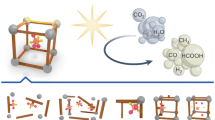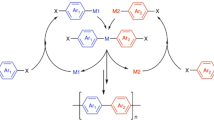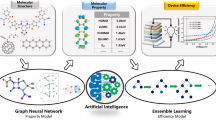Abstract
EXPERIMENTS using organic semiconductors as catalysts are interesting for several reasons. Organic semiconductors have a molecular lattice and the parameters of the catalyst can therefore be altered by altering the molecules forming the lattice. Organic chemistry techniques also enable single molecules to be synthesized in a tailor made fashion.
This is a preview of subscription content, access via your institution
Access options
Subscribe to this journal
Receive 51 print issues and online access
$199.00 per year
only $3.90 per issue
Buy this article
- Purchase on SpringerLink
- Instant access to full article PDF
Prices may be subject to local taxes which are calculated during checkout
Similar content being viewed by others
References
Schenk, G. O., Z. Elektrochem., 56, 855 (1952).
Schenk, G. O., Naturwissenschaften, 40, 205 and 229 (1953).
Schenk, B. O., Angew. Chem., 69, 579 (1953).
Inoue, H., Hayashi, Sh., and Imoto, E., Bull. Chem. Soc. Japan, 37, 326 (1964).
Gutmann, F., and Lyons, L. E., Organic Semiconductors, 750 (John Wiley and Sons, New York, 1967).
Meier, H., Die Photochemie der organischen Frbstoffe, 174 (Springer, Berlin, Göttingen, Heidelberg, 1963).
Förster, Th., Fluoreszenz Organischer Verbindungen, 109 (Vandenhoek and Ruprecht, Göttingen, 1951).
Author information
Authors and Affiliations
Rights and permissions
About this article
Cite this article
BINDING, D., STEINBACH, F. Homogeneous Photocatalysis by Organic Dyes in the Liquid Phase. Nature 227, 832–833 (1970). https://doi.org/10.1038/227832a0
Received:
Issue date:
DOI: https://doi.org/10.1038/227832a0



